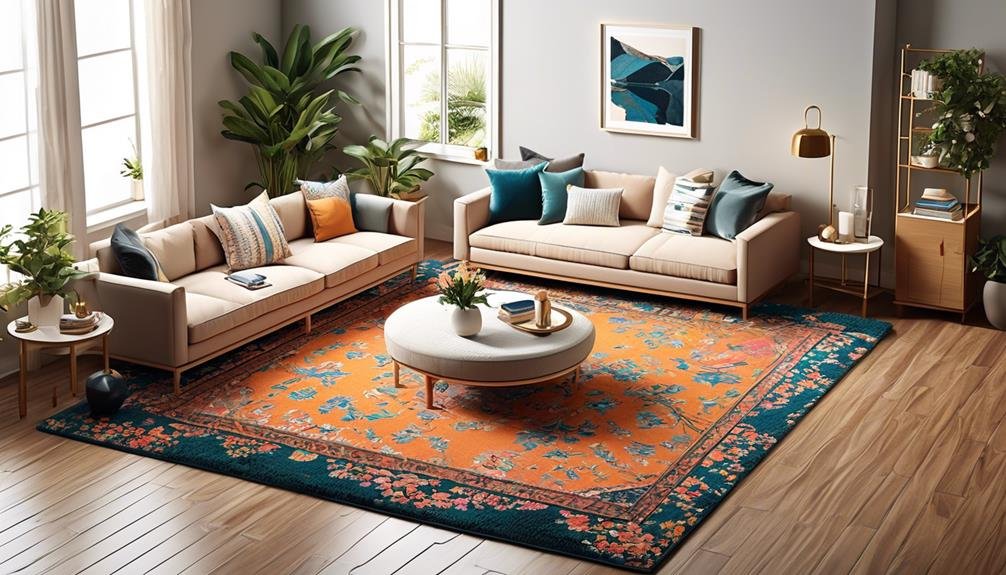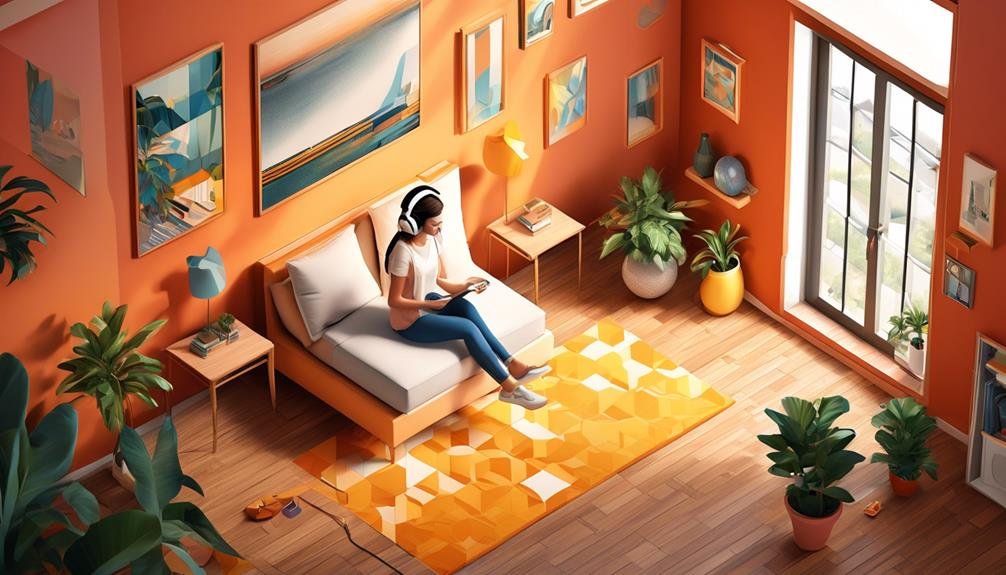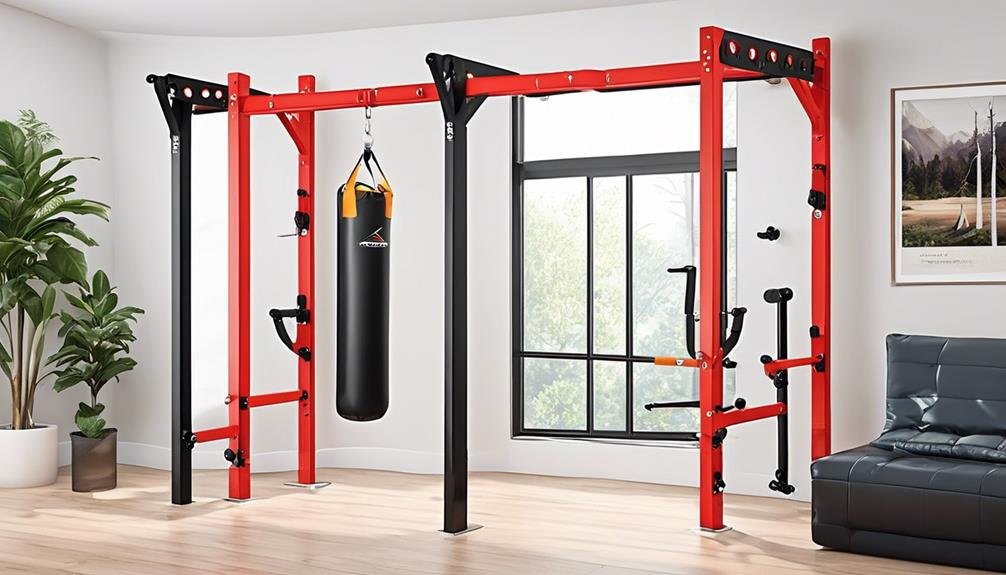Are you tired of receiving complaints from your downstairs neighbors every time you make a sudden jump or drop? It can be frustrating, but fret not, for there are effective ways to prevent such disturbances and maintain a peaceful living environment.
By implementing a combination of practical solutions, such as properly cushioning your floors, soundproofing your apartment, strategically using rugs and carpets, adjusting your furniture placement, practicing mindful movements, and communicating with your downstairs neighbors, you can ensure a harmonious coexistence.
Let's explore these methods in detail and discover how you can preserve tranquility in your home.
Key Takeaways
- Utilize floor cushioning and soundproofing techniques such as carpet padding, cork underlayment, rubber mats, and acoustic insulation to reduce impact noise.
- Strategically use rugs and carpets, focusing on high-traffic areas and areas where most impact noise occurs, to absorb sound.
- Consider furniture placement and modifications, such as placing heavy furniture against shared walls and using furniture with soft materials and cushions.
- Practice mindful movements and activities, avoiding heavy walking or movements, using furniture sliders or mats to reduce noise, and being conscious of the time of day and impact on neighbors' sleep.
Properly Cushioning Your Floors
To properly cushion your floors, consider using a variety of materials that can effectively reduce noise and minimize disturbance to your downstairs neighbors.
One option is to use carpet padding, which adds an extra layer of cushioning between the carpet and the floor. Look for high-density padding, as it provides better sound insulation.
Another option is cork underlayment, which is a natural and environmentally friendly material. Cork has excellent noise reduction properties and is easy to install.
Additionally, rubber mats or tiles can be used to cushion your floors. These mats or tiles are made from recycled rubber and can absorb impact noise effectively. They're durable and can withstand heavy use.
Another option is to use acoustic underlayment, which is specifically designed to reduce impact noise. Acoustic underlayment is often made from materials like foam, cork, or rubber, and it provides excellent sound insulation.
Lastly, consider using area rugs in high-traffic areas, as they can absorb sound and reduce noise transmission.
Soundproofing Your Apartment
Consider implementing soundproofing measures in your apartment to minimize noise disturbance for both yourself and your neighbors. Soundproofing can significantly reduce the transmission of sound between different areas of your living space. Here are some effective soundproofing techniques you can use:
| Soundproofing Techniques | Description |
|---|---|
| Acoustic Insulation | Install acoustic insulation in the walls, floors, and ceilings to absorb sound waves and prevent them from traveling. This can be done using specialized insulation materials like soundproof drywall, acoustic foam, or mineral wool. |
| Weatherstripping | Apply weatherstripping to doors and windows to create a tight seal. This will help block out external noise and prevent sound leakage. Make sure to choose high-quality weatherstripping materials for better results. |
| Rug or Carpet Padding | Place rugs or carpet padding on the floors to absorb impact noise from footsteps or dropped objects. Thick, dense materials like rubberized padding or felt can effectively reduce noise transmission. |
| Soundproof Curtains | Hang soundproof curtains on windows and doors to block out external noise. These curtains are made of heavy materials with sound-absorbing properties, providing an additional barrier against noise leakage. |
Using Rugs and Carpets Strategically

Implementing strategic placement of rugs and carpets in your apartment can further enhance your soundproofing efforts while minimizing noise disturbance for both yourself and your downstairs neighbors.
Rugs and carpets act as effective sound absorbers, reducing the impact noise caused by jumps and drops. By placing thick, dense rugs or carpets in high-traffic areas, such as hallways and living rooms, you can significantly dampen the noise produced when walking or dropping objects.
To maximize the soundproofing benefits, consider using multiple layers of rugs or carpets. This creates a barrier that absorbs and muffles sound waves, preventing them from traveling through the floor and disturbing your neighbors below. Additionally, opt for rugs or carpets with a heavy backing material, such as rubber or felt, as this further enhances their soundproofing properties.
When strategically placing rugs and carpets, focus on covering areas where most of the impact noise occurs. Pay attention to areas near stairs, as they tend to generate more noise due to increased foot traffic. Additionally, consider placing rugs or carpets under heavy furniture that may cause vibrations or impact noise when moved.
Remember to regularly clean and maintain your rugs and carpets to ensure their effectiveness in minimizing noise disturbance. Vacuuming and spot cleaning will help keep them in good condition and prevent the buildup of dirt and debris that can affect their soundproofing capabilities.
Adjusting Your Furniture Placement
You can optimize the soundproofing of your apartment and minimize noise disturbance to your downstairs neighbors by strategically adjusting the placement of your furniture. Proper placement of furniture can help absorb and block sound vibrations, reducing the impact of jumps and drops. Consider the following tips to effectively adjust your furniture placement:
| Furniture Placement Tips | Benefits |
|---|---|
| Place heavy furniture against shared walls | Heavy furniture acts as a barrier, absorbing and blocking sound waves from traveling through walls and floors. |
| Use furniture with soft materials and cushions | Soft materials, such as upholstered furniture, can help absorb sound vibrations and minimize noise transmission. |
| Position furniture away from common areas | If possible, avoid placing furniture near areas where you frequently engage in activities that cause noise, such as exercise or playing musical instruments. |
| Consider using furniture pads or rubber feet | These can help reduce vibrations and minimize the impact noise caused by furniture movements.
Practicing Mindful Movements

To minimize noise disturbance to your downstairs neighbors, it's important to practice mindful movements within your apartment. Mindful movements involve being aware of your body and the impact it can have on the floor.
Start by consciously controlling your footsteps. Instead of stomping or walking heavily, try to walk softly and gently. Land your feet softly on the ground, rolling from heel to toe with each step.
When moving furniture or other heavy objects, use caution and take the necessary steps to minimize impact. Lift objects with care, avoiding sudden drops or throws. Consider using furniture sliders or mats to reduce friction and noise when moving furniture.
Additionally, be mindful of the time of day when engaging in activities that may cause noise. If possible, avoid late-night or early-morning movements that could disturb your neighbors' sleep.
Communicating With Your Downstairs Neighbors
One effective way to foster a positive relationship with your downstairs neighbors is by initiating open and respectful communication. Clear communication can help prevent misunderstandings and address any concerns or issues that may arise. Start by introducing yourself and expressing your desire to maintain a peaceful living environment for both parties. Explain that you're aware of the potential for noise disturbances caused by jumps and drops and assure them that you're taking steps to minimize these disruptions.
It is important to actively listen to your neighbors' concerns and be receptive to their feedback. Ask them if they've specific times when they're most affected by the noise and try to accommodate their needs as much as possible. Share your schedule with them, including times when you engage in activities that may cause noise. This will allow them to plan accordingly and minimize any inconvenience.
Additionally, be proactive in finding solutions to reduce noise transmission. Invest in soundproofing measures such as rugs, carpets, or padding to absorb impact. Consider discussing these options with your neighbors and ask for their input and suggestions. By involving them in the process, you're demonstrating your commitment to finding a mutually beneficial solution.
Remember to maintain a respectful and understanding attitude throughout your interactions. Building a positive relationship through open communication won't only help prevent disturbance but also create a harmonious living environment for everyone involved.
Frequently Asked Questions
What Are Some Common Mistakes to Avoid When Cushioning Your Floors to Prevent Noise Disturbances?
Avoiding common mistakes when cushioning floors is crucial for preventing noise disturbances. Some key errors to steer clear of include using low-quality padding, inadequate insulation, and improper installation techniques.
Are There Any Specific Materials or Products That Work Best for Soundproofing an Apartment?
To soundproof your apartment and prevent disturbances to your downstairs neighbors, consider using materials like mass-loaded vinyl, acoustic foam panels, or soundproof curtains. These products can effectively reduce noise transmission and create a quieter living environment.
How Can I Strategically Use Rugs and Carpets to Minimize Noise Transmission?
To minimize noise transmission, strategically place rugs and carpets in high-traffic areas. Thick, dense rugs with a rubber or felt backing work best. Ensure the rugs cover the entire floor space to absorb impact and reduce vibrations.
Are There Any Specific Furniture Placement Tips That Can Help Reduce Noise Disturbances for Downstairs Neighbors?
To reduce noise disturbances for downstairs neighbors, consider furniture placement. Strategically arrange heavy items away from shared walls, use furniture pads to dampen impact, and avoid placing items directly on the floor.
Can You Provide Some Examples of Mindful Movements That Can Help Reduce Impact Noise?
You can minimize impact noise by practicing mindful movements, such as landing softly after jumps and drops. This reduces the vibrations transferred through the floor and helps prevent disturbances for your downstairs neighbors.
Conclusion
In conclusion, by implementing proper floor cushioning, soundproofing techniques, and strategic use of rugs and carpets, you can effectively prevent your downstairs neighbors from being disturbed by jumps and drops.
Additionally, adjusting furniture placement, practicing mindful movements, and maintaining open communication with your neighbors are important factors in reducing noise transmission within your apartment building.
By taking these steps, you can create a comfortable living environment for both yourself and your neighbors, promoting harmony and minimizing disruptions caused by noise.





